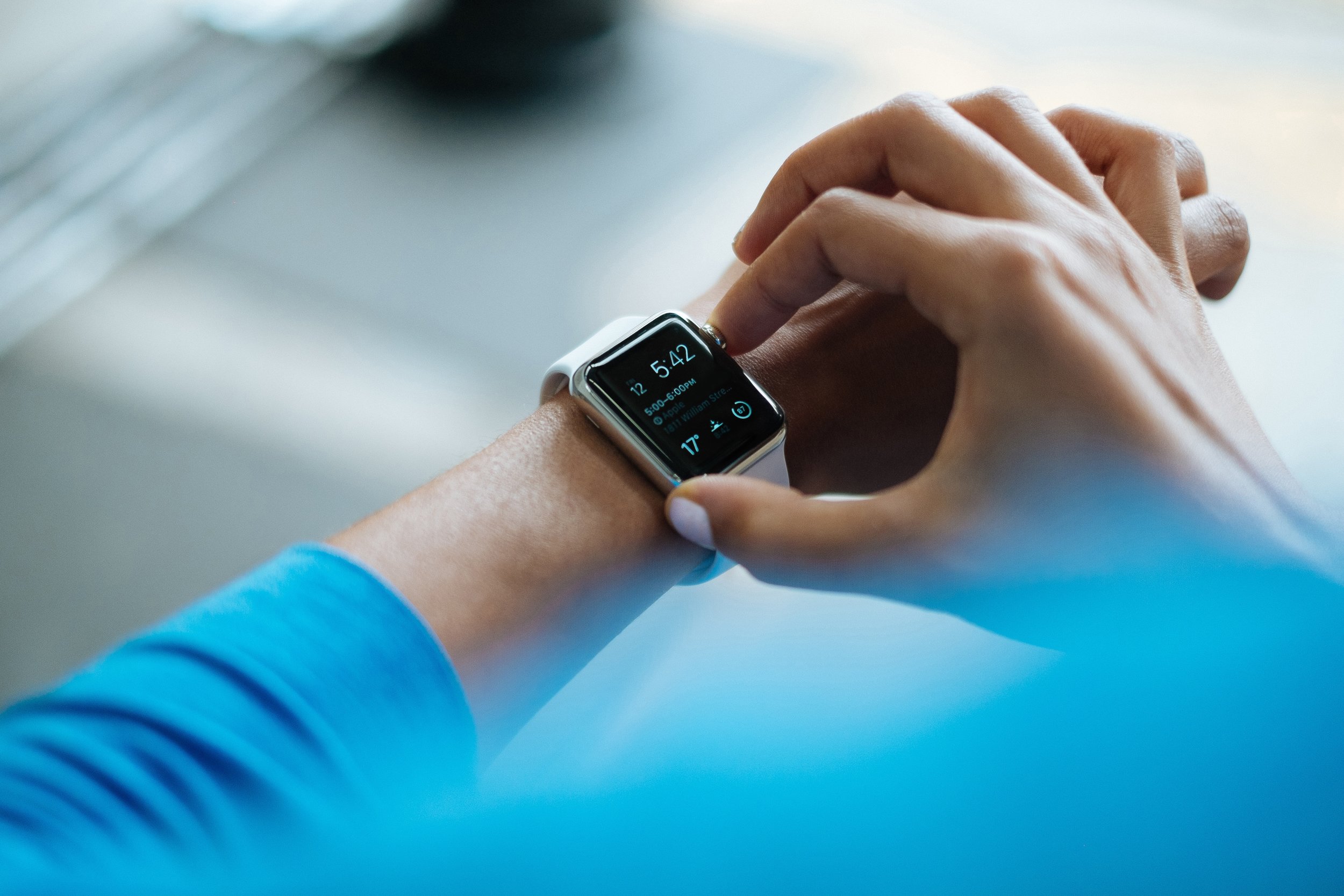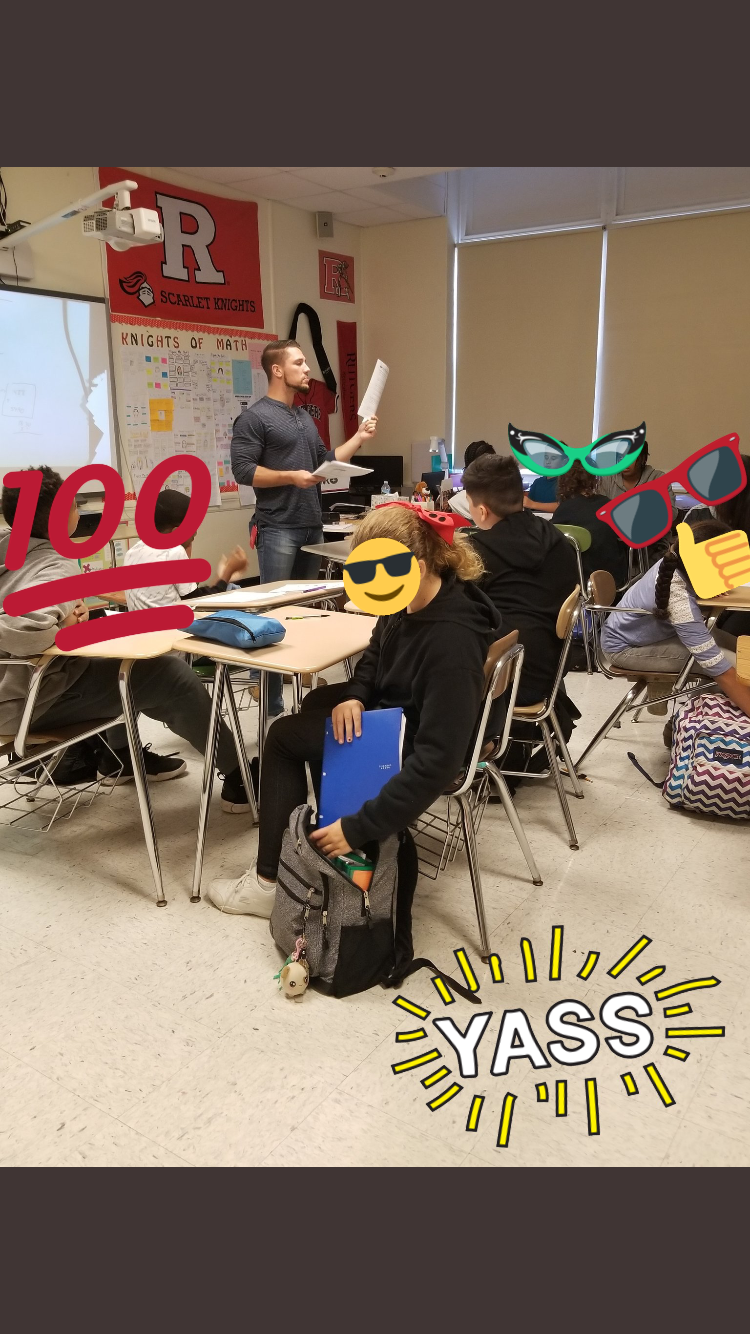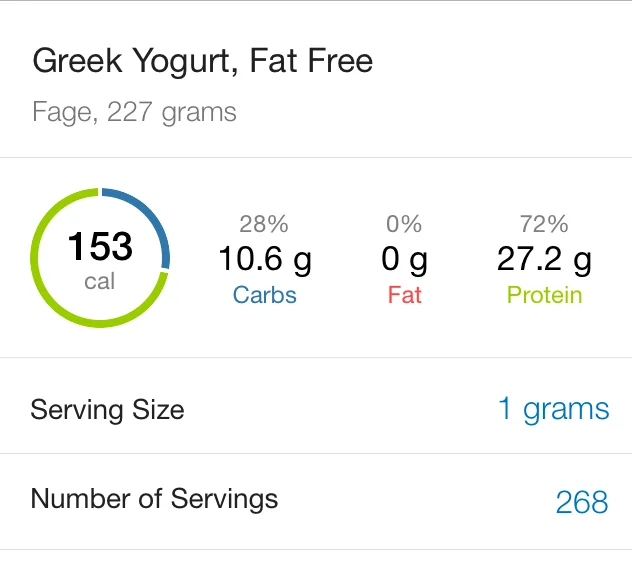The Benefits of Tracking Macros
A note before reading: If you don’t know what exactly what it means to track “macros” or are a little confused as to exactly what they are, I suggest reading the following article below:
The DIET that you do to reach your target physique or weight should NOT have a name. Simply put, the way your diet is constructed should follow the hierarchy of nutrition principles. The nuances and strategies that differ from person to person are simply TOOLS in the toolbox to best ADHERE to these principles.
There is no “optimal” diet, only practical tools to implement and principles to follow. While I talked about the practicality of Ketogenic diets HERE, I am now going to talk about a different tool.
Tracking Macros.
In this article I am going to go over WHY it may be beneficial to use this tool within your diet.
This includes:
The Problem with Calories OUT
The Importance of DATA
PROS / CONS of tracking Macros
In the next article, I will go over exactly HOW to use and implement this tool.
1.the problem with calories out
CALORIES out vs CALORIES in
To achieve a calorie deficit, we have two overarching VARIABLES that we manipulate to achieve this outcome.
Calories In: All the calories that you consume through FOOD🍱 (carbs, protein, fat)
Calories Out: All the calories that your body USES (for various processes)
The QUESTION then becomes, how do we manipulate both Calories in and Calories Out such that: Calories In < Calories Out?
Is it as simple as just eating LESS and doing MORE? What are some nuances that happen when we change more of ONE side of the equation versus the OTHER?
CALORIES OUT
It's easy to see where Calories In comes from, but what makes up all the calories we SPEND throughout the day?
Basal Metabolic Rate (BMR): Is the amount of calories needed to keep your body functioning at REST [1]. It's often referred to as your bodies “metabolism” and includes things like breathing, heart contractions, nerve function, and cell growth. This usually accounts for 60-75% of your daily calorie expenditure.
Exercise/Activity thermogenesis- These are the calories you expend from the act of exercising.
Non-exercise activity thermogenesis (NEAT): NEAT is the energy expended for everything we do that is not sleeping, eating or sports-like exercise. It ranges from the energy expended walking to work, typing, performing yard work, undertaking agricultural tasks and fidgeting [2].
Thermic Effect of Food (TEF) is the increase in metabolic rate that happens after the consumption of food. This is why if you eat a big meal (especially if it has a lot of protein), you may find your body temperature rise. This contributes the smallest amount to the calories out side of the equation.
TRACKING CALORIES OUT
That’s a lof of different moving parts. Which ones can we track? Which ones are worth tracking and calculating?
1. BMR-this one actually may be one of the EASIER ones to track. There are several formulas online that I think give a pretty good ESTIMATION (key word here) as to where someone’s particular BMR could potentially be. One I like to use is The Harris Benedict Formula:
🧑Men: BMR = 88 + (6.1 x weight in lbs) + (12.2 x height in inches) – (5.7 x age in years)
👩Women: BMR = 448 + (4.2 x weight in lbs) + (7.9 x height in inches) – (4.3 x age in years) [3]
**Note: For two people of equal age, height and weight, it will overestimate for those with more body fat/less muscle mass and underestimate for those who have more muscle mass/less body fat.
2 & 3. Exercise/NEAT
Activity Trackers: While Activity Trackers can be a cool thing to have and use, you should NOT be following them as 100% Accurate. Studies have found that activity trackers are not the best when it comes to accurately measuring calories spent [4][5].
Cardio Machines: Cardio Machines have been found to OVERestimate calories spent on machines [6]. This is pretty obvious considering Machines are just general averages and do not account for body type, metabolism and running form/efficiency (more on that later)
4. TEF-You won’t be able to measure this and just have to assume when you are eating more this will be higher and eating less this will be lower. If anything keep in mind that protein has a higher thermic effect of food. But remember, changes in this have the SMALLEST effect size on total calories.
efficiency
Now, I believe that activity can be a GREAT way to make changes to your body composition. It Doesn’t matter if its from resistance/strength training, sports, cardio, swimming or something else. But when setting up your diet, you can’t JUST rely on continuously rising⬆ activity levels.
For example, is reducing your daily calorie intake by 500 calories the same as doing an extra 500 calories of cardio each day?
Not EXACTLY:
1. One thing that is often overlooked is that in the time spent that you would be doing this 500 calories of cardio, you would still be doing SOMETHING.
Even if it's as simple as sitting on the couch scrolling on Instagram or walking around the house. You are STILL using calories!
Therefore the NET EXPENDITURE may be something like 500 calories - 50 calories (that you would have been doing anyways).
2. Another way this isn’t an “exact” equal is that the more often you do cardio the more EFFICIENT you get at it.
Running the Trenton Half Marathon in Fall 2013.
Before I did bodybuilding, I ran several half marathons✔.
One of the hallmarks of getting in shape was being able to do MORE with LESS!
This meant trying to hone down my running form so that with each stride, I burned as LITTLE calories as possible while going as FAR as possible. This means over the course of a race, I’ll be able to conserve calories and go farther and faster.
This is also why runners have low heart💕 beats. This is because a beating heart takes ENERGY. If runners can adapt and pump MORE blood per heart beat, then they can again conserve energy and be more efficient.
And the Rutgers Half Marathon in Sping 2014
I also talked in THIS article about how you also get LAZIER when you diet. Remember doing activity on a particular day could also have an impact on the REST of your day.
Question:
Let’s say you just got done cardio and you had another session later. What is the best way to maximize performance in session 2?
Answer:
The best way would be for the body to devote its resources/energy to:
Recovery, De-stressing and Adaptation.
Any energy spent stressing about school📝, work🏢, or moving around would, in theory, be a waste. So depending on the initial session, it might make sense for the body to turn down, relax and make you lazy! Thus, conserving calories for LATER.
And while this could make you a better “athlete/performer” in the 2nd session, will this help you burn more calories?
extreme activity compensation
In fact, there was a study on a present hunter gatherer society where they compared the calorie expenditure to that of Western populations[7].
In short, even though these hunter gatherers were significantly MORE active, the calorie expenditure was not all that different (when controlling for body size).
The authors present that perhaps “interactions between metabolic physiology, physical activity, and the environment are more complex than often thought”. The body seems to have a compensatory effect with an increased level of activity and it cannot simply be the only thing that should be used in a healthy lifestlye.
If you are a runner or a hunter gatherer increasing activity for SURVIVAL, it MAKES SENSE as to why these responses are beneficial, but for someone DIETING they are counterproductive❌.
I would say that after a certain point of activity level, there is a tipping point where MORE is NOT necessarily THAT much more. The body has a way of compensating for very high activity levels.
tracking food has less variability
We can see how one side of the equation is HARD to track and has a lot of different rotating variables that change over time.
Of Course, when tracking CALORIES IN you will also encounter some variability.
Food labels can have a small degree of variability.
Food Scales/Measuring Devices also have a maximum degree of accuracy
The Macros for 100 grams of Eggs
But remember that dieting is a game of TRADEOFFS. Tracking Macros has the smaller degree of variability and perhaps gives you the best tradeoff in terms of painting a picture to ONE SIDE of the Calorie equation.
By weighing out and measuring the food you eat each day, you can get the closest Macro and calorie amount for that day. And although you will still get some of the counterproductive effects of dieting, you won’t have as many “tracking” roadblocks.
Now you can OF COURSE lose weight WITHOUT tracking energy expenditure OR calories. Whether your body knows it or not, being in a calorie deficit in itself will result in weight loss. It doesn’t matter whether you collect and accumulate the data reflecting it.
So why do I keep emphasizing tracking? What’s so important about tracking?
2. the importance of data
Without Data, we are Blind
Photo by Mika Baumeister on Unsplash
Let’s look at 3 scenarios.
All 3 people 👩🧑👦want to LOSE weight.
They will all try and do this by eating LESS ⬇calories and INCREASING⬆ activity levels.
For simplicity, let’s say all 3 people have the same BMR and activity levels.
The Scenarios:
Scenario 1: Person A’s 👩Plan is to NOT track anything and just do things “intuitively”.
Scenario 2: Person B’s 🧑Plan is to to track macros 3-4 days a week pretty loosely and not track the other days.
Scenario 3: Person C’s 👦Plan is to track Macros 7 days a week and weigh, measure ~90-95% of the food they eat.
OUTCOME: After a month of eating less and doing more, All 3 groups see NO changes.
Now let’s say all 3 people come to YOU for help. Based on the data they collected, which scenario would you be most likely to ACCURATELY DIAGNOSE what the problem is?🤔
showing your work
Obviously it's Scenario 3👦.
When my clients track Macros, I like to give them the analogy that they are a STUDENT with algebra homework trouble and I am the MATH TEACHER who can help them.
If a student doesn’t know WHERE he or she got a problem wrong and doesn’t show ANY work, it's harder for me to really pinpoint what exactly is the step that is getting them to the wrong answer.
On the other hand, if a student shows ALL their work, I can help them make adjustments and accurately diagnose what is going wrong.
This is why TRACKING is such a valuable tool. And it's simply not just tracking EVERYTHING. Its tracking what perhaps can give us the most “bang for our buck” as a tradeoff.
Tracking Macros, scale weight and perhaps some subjective feelings (such as sleep, hunger and energy) can paint a big beautiful canvas in which we can let data accumulate and really see the TREND of what is going on.
3. PROS / CONS of tracking macros
Decreased Stress Levels
When I talked about “How YOU can influence a diet” (read HERE), I talked about how a BIG roadblock of dieting is worrying or STRESSING.
You have ENOUGH things in life to worry about. School, work, relationships, and life stressors should take up most of your energy. Not to mention dieting in itself is stressing😐.
When used correctly, tracking Macros is a tool that should HELP take some stress out of the dieting part.
You can focus more so on just hitting your target numbers and LESS on your bodies “false” hunger and energy signals that it sends you.
Believing and trusting a diet are two important principles that go a LONG way. If you really BUY INTO the thought that when in a calorie deficit you will lose fat, then it's easier to stick to the calorie value that yields that outcome. Even when scale weight stalls or goes up, you can still be at peace of mind if you stick to your target macros a decent amount of the time (be honest though!).
Essentially, you can do:
MORE “Trusting the process” &
LESS “Worrying whether the process is working”
PRECISION WITH ADJUSTMENTS
Not to mention that even when things DO stall after a period of time, tracking macros will give you a dataset of numbers that you can use to work out your kinks. Having “outputs” that can result in ACTIONABLE adjustments will help you keep calm knowing that you are in the know how of what is actually happening!
For example,
You are seeing your scale weight rise or fall-> you can make changes to your MACROS from the baseline dataset that you started out with.
You can control what KINDS of Macros you are eating throughout the day and try new things out. Say you think carbs in the morning are making you sluggish. You can sub in some fats with some carbs and keep calories level to see if you notice any changes.
If you overeat on one day of the week, you can undereat a specific calorie amount to compensate from the other day and have 2 data points that average out.
I can relate to both of these points here. Tracking Macros makes me not worry while dieting. In the past I had struggled with differentiating between normal dieting cravings and serious hunger from really under eating.
But for some, the opposite happens, which brings me to a DOWNSIDE of tracking Macros.
INCREASED STRESS LEVLES
On another side, tracking macros can be stressful.
It takes commitment, time and energy to:
Learn the PROCESS of tracking
COOK & Prepare meals
PRE-plan your days
to make sure you hit your targets.
To some, tracking makes them feel like a robot🤖 and makes them stressed when they go to situations where they can’t accurately weigh or track what they are eating.
Every tool has its pitfalls, and for tracking macros this is the BIGGEST turn off for those who are open to the idea.
WHY CAN’T WE JUST TRY TO “EAT LESS”
What SOME don’t realize though, is that tracking macros has another subtle benefit besides knowing whether or not you are hitting your targets each day. This comes from the thought:
Why can’t most of us just intuitively eat less and consistently lose weight?
Why can’t we just LISTEN to our bodies?
We know that there are many ROADBLOCKS to dieting (see our “What constitutes a successful diet” series) and one of the biggest is our environment. From YEARS and YEARS of habit formation and environmental cues, we can operate differently from what our body NEEDS and adapt to what is HAPPENING to us.
Some people (like me) are stress eaters🍨🍩🍪.
We have a long, hard and emotional day and we go for food as COMFORT.
This would of course, be counterproductive to our diet and it's our BODY flat out ignoring the hunger signals and going based on emotions.
Not to mention, all we do is see food itself. Some people associate eating less QUANTITY of food with eating less CALORIES.
But since we know ENERGY💥 from food is what drives weight loss and not how much MASS of food we eat, this can be misleading.
Without some basic nutrition knowledge into what higher vs lower calorie foods are, how could we be trusted just to intuitively pick out foods that give us the best macro tradeoffs without ever actually knowing what they are?
And now we see another benefit of Tracking Macros…
knowledge
Tracking Macros is also a valuable tool to learn about food composition. The simple act of READING and dissecting food labels can open eyes😲 to a lot of people.
You can learn a lot about WHAT FOODS can give you the MOST satiation with the LEAST amount of calories in them. And although I don’t like the term “good” food vs “bad” food, you can really start to “invest” better in your calories and make more sound tradeoffs with what you eat.
For example, did you know:
What an actual serving of Peanut Butter looks like. A lot smaller than people think.
3 oz of Blackberries has 5g of fiber?
8oz piece of chicken can have almost 150 less calories than a hamburger of the same size?
A Pint of Ben and Jerry’s Ice Cream normally has over 1000 calories?
Have you ever actually measured out a serving of Peanut Butter?
What foods are mismarketed as “high protein”?
Or how about when some labels try to trick you by saying “low carb” only do pack 8g of fat to make up for the taste?
All that can be learned by TRACKING WHAT we eat.
If you’re really adventurous Check out the nutrition facts for Cinnabon 😐😐😐and compare it to an EQUAL serving size of Non-Fat Greek Yogurt 😂(see images on the right)
(full nutrition profile for Cinnabon Classic Roll Below)
learn from doing
Humans are very good at learning from our MISTAKES.
There’s no better teacher than anecdotal experience. Sometimes you won’t realize how POOR some macros are for foods until that time where you try to squeeze it into your macros one day and you go to sleep SUPER HUNGRY.
Not to mention the simple habit of crafting meals with a specific macro target in mind is a great feedback loop🔁 to teach your body what reasonable servings sizes are so that when you don’t track, you can still have a mental image of what better macro tradeoffs really are.
For example, maybe going out to eat was always your pitfall and looking back you always ate TOO much. There are times when you wouldn’t have to necessarily weigh things at a restaurant, but could ESTIMATE meals based on things you have made at HOME before.
I predict that if you made steak🥩 & potatoes🍠 with some broccoli🥗 for a couple days at home that you could guesstimate it if you got the same thing when you went out to eat later on.
takeaway
In an IDEAL world, we would intuitively eat and still be able to lose or gain weight simply through listening to our body and the habits that we have built up. Although this seems like a far off and unrealistic scenario, I believe that it can be achievable.
I think that with years of tracking macros and looking at the changes in our body composition as a result can pave the way to intuitive eating. Which again, is the stress free method of achieving the same exact results.
Conclusion
As you can see Tracking Macros can give us:
ACCURATE Data
Minimal STRESS
KNOWLEDGE to learn from
In fact, Tracking Macros is MY go-to TOOL to help clients, and you can see WHY.
For me, the main reason writing this was actually to have as a “Selling Point” to get more people to give Tracking Macros a TRY. Knowledge can go a long way and getting people to understand all the benefits of tracking macros is the first step in me getting to help them.
The next step, is the ACTION part. HOW do you track Macros? The follow-up to this is a guide you can use ANYTIME to teach YOURSELF or someone else HOW to track macros. This will range from the basics all the way to little nuances I’ve picked up with myself and clients. Click Below to read it:
Sources:
[1] https://www.active.com/fitness/calculators/bmr
[2] https://www.ncbi.nlm.nih.gov/pubmed/12468415
[3] https://rippedbody.com/complete-diet-nutrition-set-up-guide/
[4] https://med.stanford.edu/news/all-news/2017/05/fitness-trackers-accurately-measure-heart-rate-but-not-calories-burned.html
[5] https://www.ncbi.nlm.nih.gov/pmc/articles/PMC4683756/
[6] https://www.institutefornaturalhealing.com/2016/02/exercise-machines-lie-about-burned-calories/
[7] https://www.ncbi.nlm.nih.gov/pmc/articles/PMC3405064/









